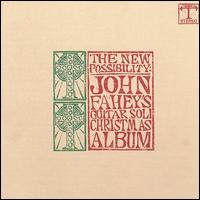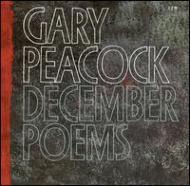Off topic, part two: top ten or eleven albums of 2005
CD's? What are those doing here!?! I know, I know... this is supposed to be a vinyl-only blog, but I couldn't resist showing you my best-of-2005 list from my radio show (thanks to everyone who tuned in).
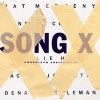 1. PAT METHENY/ORNETTE COLEMAN Song X Twentieth Anniversary (Nonesuch) - I struggled with the guilt over putting a reissue of a twenty-year-old album atop this list until I concluded that the remastering of this album (producing a crisp, you-are-there sound unheard of in the early days of CD's), the closer sequencing of the tracks (adding an even greater immediacy to the proceedings) and the six previously unreleased tunes at the beginning made this practically a brand new album. Proof that even a masterpiece can be improved.
1. PAT METHENY/ORNETTE COLEMAN Song X Twentieth Anniversary (Nonesuch) - I struggled with the guilt over putting a reissue of a twenty-year-old album atop this list until I concluded that the remastering of this album (producing a crisp, you-are-there sound unheard of in the early days of CD's), the closer sequencing of the tracks (adding an even greater immediacy to the proceedings) and the six previously unreleased tunes at the beginning made this practically a brand new album. Proof that even a masterpiece can be improved. 2. DRUMHELLER (Rat-Drifting) - By mining an underappreciated vein of creative music (namely the seventies quartet sound of Anthony Braxton, with a little Roswell Rudd thrown in for good measure) for inspiration, these five Montreal-based musicians made one of the most enjoyable and accessible avant-jazz albums of the year.
2. DRUMHELLER (Rat-Drifting) - By mining an underappreciated vein of creative music (namely the seventies quartet sound of Anthony Braxton, with a little Roswell Rudd thrown in for good measure) for inspiration, these five Montreal-based musicians made one of the most enjoyable and accessible avant-jazz albums of the year.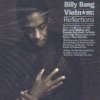 3. BILLY BANG Vietnam: Reflections (Justin Time) - Mixing modern modalism with traditional Vietnamese melodies and instrumentation, violinist Bang made a warm-hearted, inviting album that straddled realms both global and personal.
3. BILLY BANG Vietnam: Reflections (Justin Time) - Mixing modern modalism with traditional Vietnamese melodies and instrumentation, violinist Bang made a warm-hearted, inviting album that straddled realms both global and personal.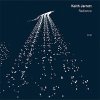 4. KEITH JARRETT Radiance (ECM) - Alone at the piano once more (after what seems like a lifetime of stellar recordings with the Standards Trio), Jarrett digs deep and produces his most personal and soulful solo set since The Koln Concert.
4. KEITH JARRETT Radiance (ECM) - Alone at the piano once more (after what seems like a lifetime of stellar recordings with the Standards Trio), Jarrett digs deep and produces his most personal and soulful solo set since The Koln Concert.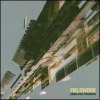 5. FIELDWORK Simulated Progress (Pi) - Brief, snappy rhythm-based improvisations by this sax/piano/drums trio may point toward the shape of jazz to come.
5. FIELDWORK Simulated Progress (Pi) - Brief, snappy rhythm-based improvisations by this sax/piano/drums trio may point toward the shape of jazz to come.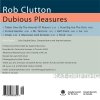 6. ROB CLUTTON Dubious Pleasures (Rat-Drifting) - Prolific Canadian bassist steps out on his own with an accomplished set of solo compositions and improvisations.
6. ROB CLUTTON Dubious Pleasures (Rat-Drifting) - Prolific Canadian bassist steps out on his own with an accomplished set of solo compositions and improvisations.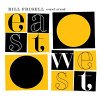 7. BILL FRISELL East/West (Nonesuch) - Nothing really new or surprising on this double-disc of live material from two trio dates on either side of the U.S., but for fans of this tastefully avant guitarist, that's not necessarily a bad thing.
7. BILL FRISELL East/West (Nonesuch) - Nothing really new or surprising on this double-disc of live material from two trio dates on either side of the U.S., but for fans of this tastefully avant guitarist, that's not necessarily a bad thing.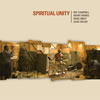 8. MARC RIBOT Spiritual Unity (Pi) - This saxless tribute to one of the most iconically identifiable hornmen who ever lived succeeds because the players concentrate their efforts not on Albert Ayler's sound or legend, but on his belief in music as ritual (and life as music).
8. MARC RIBOT Spiritual Unity (Pi) - This saxless tribute to one of the most iconically identifiable hornmen who ever lived succeeds because the players concentrate their efforts not on Albert Ayler's sound or legend, but on his belief in music as ritual (and life as music). 9. ANTHONY BRAXTON/MATT BAUDER 2 + 2 Compositions (482 Music) - One of many albums released by Braxton in 2005, this Cage-y quartet date pairs him with some of his former students and marks the recording debut of Bauder as a composer.
9. ANTHONY BRAXTON/MATT BAUDER 2 + 2 Compositions (482 Music) - One of many albums released by Braxton in 2005, this Cage-y quartet date pairs him with some of his former students and marks the recording debut of Bauder as a composer.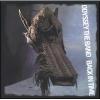 10. (tie) ODYSSEY THE BAND Back in Time (Pi) - James Blood Ulmer regroups his classic trio from the Odyssey LP and produces a more-than-worthy sequel.
10. (tie) ODYSSEY THE BAND Back in Time (Pi) - James Blood Ulmer regroups his classic trio from the Odyssey LP and produces a more-than-worthy sequel.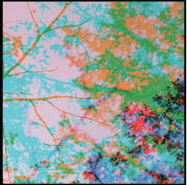 TONY WILSON Horse's Dream (Drip Audio) - A folksy solo outing from the king of Canadian avant-garde guitar.
TONY WILSON Horse's Dream (Drip Audio) - A folksy solo outing from the king of Canadian avant-garde guitar.
